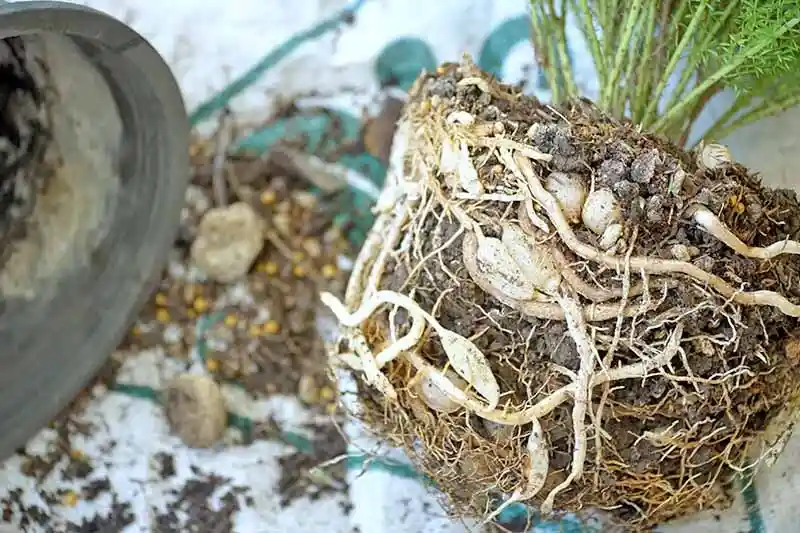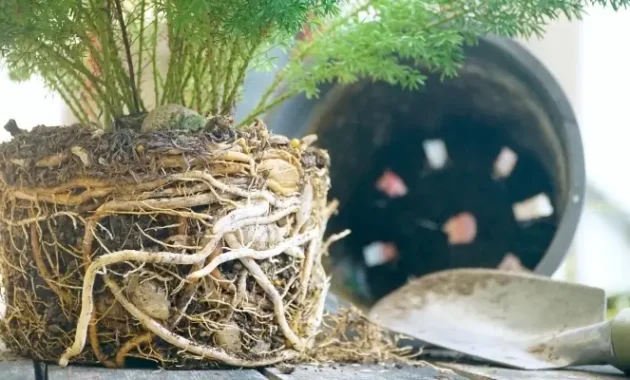Asparagus ferns are a popular choice for indoor and outdoor plants due to their unique foliage and ease of care. However, often overlooked are the crucial parts of the plant that contribute to its growth and development: the roots. Proper care and maintenance of asparagus fern roots are vital to ensuring a healthy and thriving plant. In this article, we will explore the structure and function of asparagus fern roots, how to plant them, essential care tips, and troubleshooting common issues. By the end, readers will have a comprehensive understanding of asparagus fern root care and how to promote optimal growth for their plants.
Understanding Asparagus Fern Roots
Asparagus ferns are known for their lush, green foliage and delicate, airy fronds. However, their root system is just as important as their aboveground appearance for proper growth and development. The roots serve as the foundation for the plant, providing essential nutrients and water uptake.
The root system of asparagus ferns is fibrous and shallow. The roots are thin and branching, spreading out horizontally just beneath the soil surface. These roots are responsible for absorbing water and nutrients from the soil, and they also provide a support system for the plant.
Asparagus ferns can be propagated through root division, which involves separating the roots of an established plant and planting them individually. This method can be used to create new plants or to rejuvenate older asparagus ferns that have become overgrown. Root division is typically done in the spring, just as the plant begins to emerge from dormancy.
Propagation through Root Division
- Start by carefully digging up the entire asparagus fern plant.
- Shake off excess soil to expose the root system.
- Look for natural points of separation in the root system, where individual roots have begun to branch off from the main mass.
- Using a sharp, clean knife or garden shears, cut through the root system at these points of separation.
- Make sure each individual root section has several fronds attached and a healthy-looking root mass.
- Plant each root section immediately in moist soil, making sure the roots are covered and the fronds are above the soil surface.
- Water the newly planted root sections thoroughly and place them in an area with bright, indirect sunlight.
Understanding the structure and function of asparagus fern roots is essential for ensuring the proper care and growth of these plants. Whether propagating through root division or planting new asparagus ferns, maintaining healthy, vigorous roots is critical for the long-term success of these popular houseplants.

Planting Asparagus Fern Roots: Step-by-Step Guide
Planting asparagus fern roots is a simple and straightforward process that can lead to beautiful and healthy plants. Here is everything you need to know to get started:
Step 1: Choose the Right Location
When selecting a planting location, it is important to choose an area that gets partial to full shade. Asparagus ferns prefer cooler temperatures and do not do well in direct sunlight. When grown outdoors, they can be planted in well-drained soil with a pH between 6.0 and 7.0.
Step 2: Prepare the Soil
Before planting asparagus fern roots, make sure that the soil is well-prepared. This includes removing any weeds, rocks, or debris and adding organic matter such as compost or well-rotted manure. Work the soil to a depth of at least 8 inches to ensure that it is loose and aerated enough to promote strong root growth.
Step 3: Plant the Roots
Plant the asparagus fern roots in the prepared soil, making sure that the soil is well-moistened before planting. Gently spread the roots out and cover them with soil, leaving about an inch of soil on top. Make sure that the roots are not too deep or too shallow, as this can affect growth.
Step 4: Water and Mulch
After planting, water the roots thoroughly to ensure that they are well-hydrated. Mulch the soil with a layer of organic matter such as straw or wood chips to help the soil retain moisture and keep the roots cool. This will also help to prevent weeds from growing around the roots.
Step 5: Care and Maintenance
Asparagus fern roots require regular watering and fertilization to promote healthy growth. Water the plants regularly, ensuring that the soil remains moist but not waterlogged. Fertilize the plants with a balanced fertilizer every four to six weeks during the growing season.
Avoid overwatering the plants, as this can lead to root rot and other fungal diseases. Also, be sure to prune the roots regularly to prevent overcrowding and promote vigorous growth.
By following these simple steps, you can grow beautiful and healthy asparagus fern plants with strong, vigorous roots.
Essential Care Tips for Asparagus Fern Roots
Asparagus ferns are hardy plants that require minimal care. However, proper maintenance of the root system is essential for the overall health and growth of the plant. Here are some essential care tips for asparagus fern roots:
- Watering frequency: Asparagus ferns require regular watering to maintain healthy root growth. Water the plant thoroughly whenever the top inch of soil feels dry to the touch. Avoid overwatering, as this can cause the roots to rot.
- Fertilization: Fertilize the asparagus fern once a month during the growing season with a balanced fertilizer. This will provide the essential nutrients required for healthy root development.
- Pruning: Prune the asparagus fern roots regularly to promote vigorous growth. Remove any dead or damaged roots using a pair of sharp scissors. This will help to prevent the spread of diseases and pests.
- Preventing root rot: Root rot is a common problem that can affect asparagus ferns. To prevent this issue, ensure proper drainage by using a well-draining soil mix and avoiding overwatering. If root rot does occur, remove the affected roots and repot the plant in fresh soil.
By following these essential care tips, you can ensure that your asparagus fern roots remain healthy and strong, promoting the overall growth and beauty of your plant.
Troubleshooting Common Issues with Asparagus Fern Roots
Despite proper care, asparagus fern roots can sometimes encounter issues. One common problem is root rot.
Root rot can occur when the roots are consistently too wet, leading to a fungal infection. Symptoms of root rot include yellowing leaves, wilting, and a foul odor emanating from the soil.
To prevent root rot, make sure to provide proper drainage for the plant and avoid overwatering. If root rot is already present, it’s essential to act quickly to save the plant:
- Remove the plant from soil and inspect the roots carefully.
- Cut away any soft, dark, or rotting roots with sterilized scissors or shears.
- Repot the plant in fresh, sterile soil and a clean pot.
- Let the soil dry out slightly before watering the plant.
With proper attention and care, most asparagus fern roots can recover from root rot and continue to thrive.
Growing Asparagus Fern Roots in Containers
Asparagus ferns can thrive in containers, making them a great option for those with limited garden space. However, growing asparagus fern roots in containers requires special considerations to ensure healthy growth.
Container Selection
When selecting a container for your asparagus fern plant, it’s important to choose one that is large enough to accommodate the root system. The container should also have drainage holes to prevent waterlogging, which can lead to root rot.
Soil Mixture
Asparagus fern roots require well-draining soil to prevent water buildup and root rot. A mixture of peat moss, perlite, and sand in equal parts can provide the ideal growing environment. Alternatively, a good quality potting soil can be mixed with perlite or sand for improved drainage.
Watering and Maintenance
Asparagus fern roots in containers require regular watering to keep the soil moist but not waterlogged. It’s important to allow the soil to dry out slightly between watering to prevent root rot. Fertilization should be done every two weeks during the growing season, using a balanced liquid fertilizer.
Pruning
Pruning is essential for maintaining the health of asparagus fern roots in containers. Regularly remove any dead or dying foliage and prune back any overgrown or leggy branches to encourage healthy growth.
By following these tips for growing asparagus fern roots in containers, you can enjoy healthy and thriving plants in even the smallest of spaces.
Conclusion
Asparagus fern roots play a vital role in the overall health and growth of asparagus fern plants. By understanding their structure and function, as well as implementing proper care techniques, gardeners can ensure successful growth and a long-lasting plant. This article has provided a comprehensive guide to asparagus fern roots, including tips for propagation, planting, care, and troubleshooting common issues like root rot.
Whether growing asparagus ferns in the garden or in containers, it is important to follow the recommended guidelines for optimal root health. Remember to monitor watering, fertilization, and pruning practices, and address any issues that arise promptly. By following these tips, readers can enjoy a thriving asparagus fern plant for years to come.


